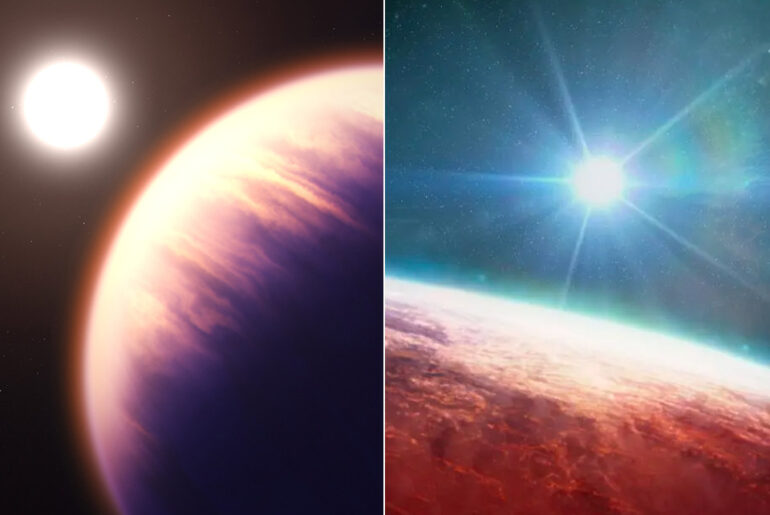
NASA’s James Webb Space Telescope has just observed the molecular and chemical portrait of WASP-39 b, a “hot Saturn” orbiting a star approximately 700 light-years away. The data included its atmospheric constituents and its highly sensitive instruments detected a host of contents, such as water, sulphur dioxide, carbon monoxide, sodium as well as potassium.
This observation was made possibly utilizing a variety of instruments that together cover a broad swath of the infrared spectrum and a panoply of chemical fingerprints inaccessible with other telescopes. It also marks the first detection of sulphur dioxide in an exoplanet atmosphere, a molecule generated from chemical reactions triggered by high-energy light from the planet’s parent star.
- ✅【Easy To Set Up】In order to save your time, our telescope can be installed without any additional tools, and truly realize no-tool-set...
- ✅【High Quality Optics】400mm(f/5.7) focal length and 70mm aperture, the lens is fully coated with high transmission coatings. The high...
- ✅【Optimum Magnification】Our refractor telescope is equipped with two eyepieces (H25mm and H10mm) and a 3X Barlow lens. The 3x Barlow lens...


This is the first time we have seen concrete evidence of photochemistry — chemical reactions initiated by energetic stellar light — on exoplanets. I see this as a really promising outlook for advancing our understanding of exoplanet atmospheres with [this mission],” said Shang-Min Tsai, a researcher at the University of Oxford in the United Kingdom.






